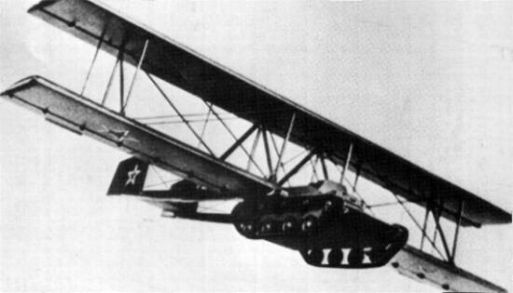After the appearance of tanks on the battlefield, there was a question of increasing their maneuverability and mobility. Soon, tracked tanks appeared, equipped with reinforced engines and stronger armor. Experience quickly made it apparent that tanks, along with assault aircraft, were the main striking force of the armed forces. Thus the idea was born to create a flying tank.
In the 1930s, the Soviets carried out their first tests on deploying armored cars and tanks from the air. The aircraft used to carry them was the TB-3 heavy bomber. Under the fuselage of the aircraft were suspended T-27 tankettes and T-37A light tanks, and the attempt was made to land them directly on the water.
Despite the relative success of that particular project, by the beginning of WWII both variants of the tank were outdated. However, the lack of alternatives forced them to be used after the start of the war. In the fall of 1941, T-37A tanks were flown by air to the Vyazma region in order to oppose the German landing party there.
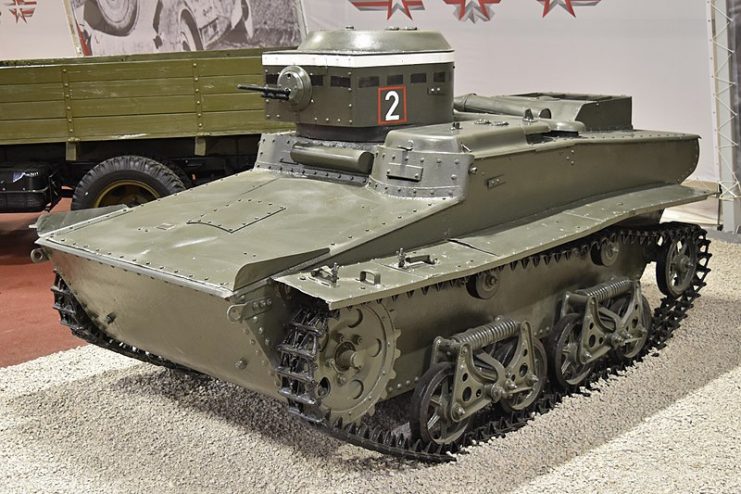
Another more radical option for creating a flying tank was equipping it with wings. In 1933, designer Aram Rafaelyants and his associates offered to create such a tank. The light tank BT-2 was chosen as a base. It was suspended under a special glider, and in the aft part of the glider a propeller was installed.
Kliment Yefremovich Voroshilov, People’s Commissar for Defense of the Soviet Union, after having familiarized himself with the project, concluded, “a flying tank is technically feasible, but it takes a very long time to get positive results from [Rafaelyants’] work.” After that, work on Rafaelyants’ flying tank was discontinued.
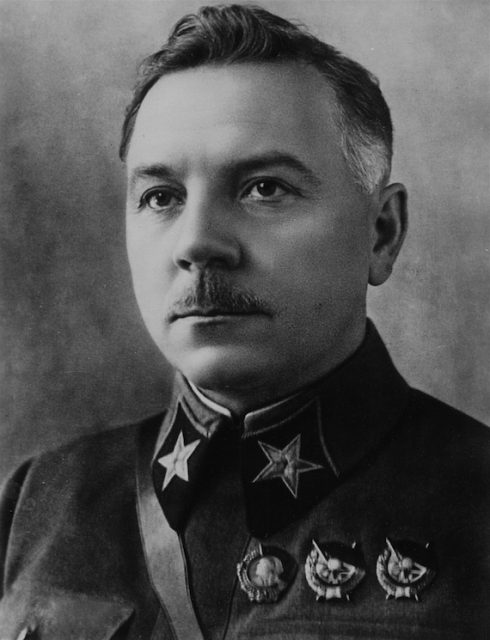
In 1941, aircraft designer Oleg Antonov received an order from the Soviet Air Force to design a glider for landing tanks. He proposed to install on the T-60 light tank large biplane wings and a double tail consisting of wood and fabric. It would be designed to drop its wings and be ready for battle within a few minutes of landing.
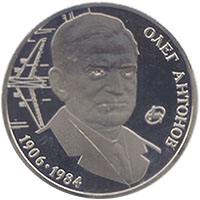
Preliminary calculations showed that the T-60 was too heavy, so the prototype had to remove the turret with weapons and carry only 26 gallons of fuel. After that, the weight of the tank with the wings was 17,205 lb, of which 4,418 lb was the wings.
Control during flight was carried out at the driver’s seat with the help of cables that were attached beneath the wings to their ailerons and flaps. In the flight position, the turret of the tank was to be turned back. A GAZ-202 gasoline engine producing 70 hp was installed in the rear, for movement on the ground.
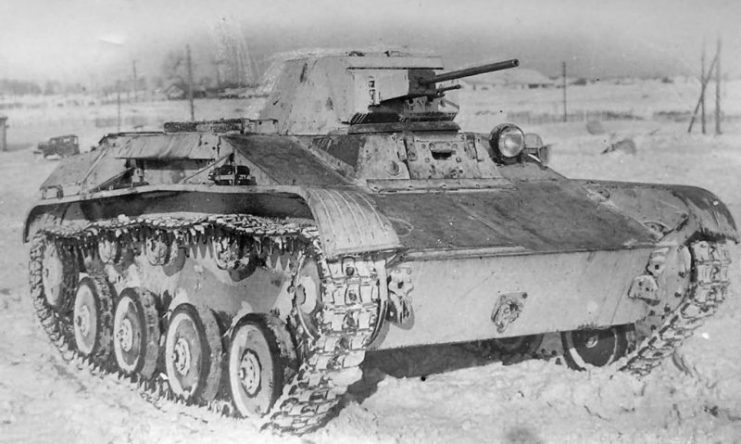
This design for a flying tank, designated the A-40, was identical to the 1941 model of the T-60. With the exception of the dismantling of the tower, there were no other special modifications aimed at facilitating flight.
Work on the A-40 began in December 1941 and was carried out until February 1943, when the tank was removed from production. The single working unit was made in April 1942 at Plant No. 241 in Tyumen.
According to calculations, the A-40 was supposed to take off by being towed behind a Tupolev TB-3 heavy bomber. Its intended use was support for partisans or airborne forces. The tank was to be delivered by air to the landing area, then uncoupled and put into action after landing. The crew of the A-40 was two people.
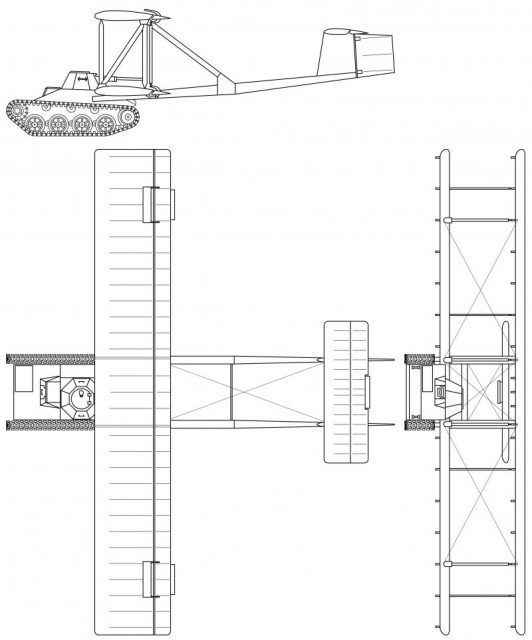
At the time, the USSR’s Pe-8 strategic bomber likely would have been better capable of successfully towing the tank through the air. However, in the war years, these bombers were scarce and were used for more important purposes, such as the bombing of Berlin. There were not enough to spare for a flying tank project, so the TB-3 was used instead.
On September 2, 1942 the first flight of the “tank wings” occurred. Sergey Anokhin, the famous test pilot, glider pilot, and Hero of the Soviet Union whom friends called “the commander of a flying turtle,” piloted the A-40.
In spite of the absence of a turret and a lighter weight, the tank’s large mass limited the TB-3’s speed to 80 mph. That was too slow, and the A-40 reached a height of only 131 feet. The TB-3’s engines began to overheat, so it was decided to land at an airfield near Bykovo.
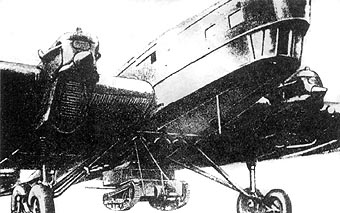
Sergey Anokhin, thanks to his professionalism, managed to successfully land the tank. After landing, he engaged the tank’s motor and, without shedding its wings, slowly drove the tank to the command post of the airfield.
Seeing this unusual vehicle, the head of the airfield raised an alarm and ordered that the anti-aircraft battery be prepared. Anokhin was forced to stop the tank and get out, and he was immediately detained by soldiers of the Red Army.
After the arrival of the flight test institute’s rescue team, the incident was settled. Anokhin was released, and the tank was returned.
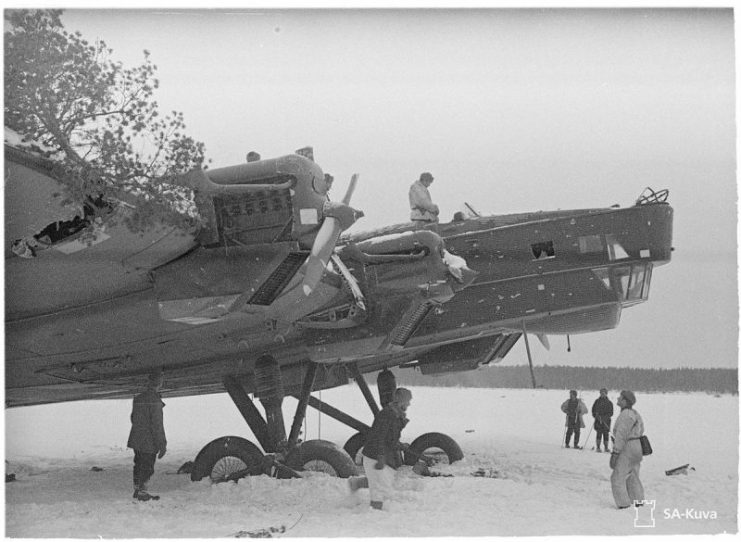
Read another story from us: 9 Soviet Fighter Planes of WW2 – Some fantastic Airplanes Here
That was the first and last flight of the A-40 flying tank. The designers had not taken into account the amount of drag which prevented the TB-3 from raising the glider to the required height and complicated its control during the flight. The project was deemed inappropriate and terminated.
Despite this, the Soviet Union continued to develop effective methods for deploying airborne vehicles, even after the war.
